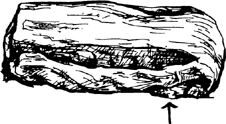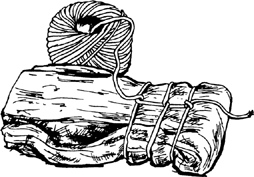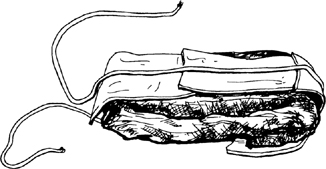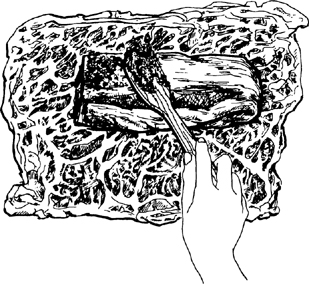Mastering the Art of French Cooking, Volume 2 (79 page)
Read Mastering the Art of French Cooking, Volume 2 Online
Authors: Julia Child

TYING AND LARDING THE TENDERLOIN
Whether it is roasted or braised, and whether you are using the heart (
central section
) or the whole tenderloin, the circumference must be tied to keep the meat together and to force it into cylindrical rather than oval shape for even cooking. Use the rather thick, soft, white butcher’s string, often called corned-beef twine, if you can find it. The top of the meat is the side
formerly covered by a shiny membrane, as opposed to the ridged side, which rested against the back bone.
When you are roasting the whole tenderloin, |
|
| When you wish to tie the meat without larding it, tie or wind firm loops of string around the circumference at 1¼-inch intervals |
To lard and tie the meat, drape pork fat or suet over the top of the meat and down under the folded tail to hold it in place. Tie a loop of string around the length of the meat |
|
| Then arrange strips of fat over the sides of the meat; tie loops of string around the circumference |
If you can find or order caul fat, that marvelous membrane webbed with fat that comes from inside the pig, it is perfect for wrapping a tenderloin that is roasted with a covering of mushroom |
|
| Fold a double thickness of caul fat around the meat to enclose it completely, and tie in place |







